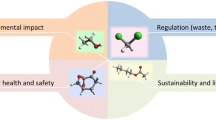Abstract.
Photophysical properties of heavy-water-based rhodamine dye solutions have been investigated, with a view to assess the suitability of heavy water as a solvent for high-power, high-repetition-rate dye lasers and amplifiers. We have measured the quantum yield of fluorescence of the commonly used dyes rhodamine-6G, rhodamine-B and kiton-red, dissolved in heavy water, ethanol and normal water. The performance of a heavy-water-based pulsed rhodamine-6G dye laser has been investigated in broadband, as well as in narrowband wavelength-tunable resonator configurations, yielding laser efficiencies comparable to those achieved with ethanolic solutions of the same dye. We have also studied the thermo-optic properties of normal and heavy water, using the Z-scan technique. Finally, photodegradation rates for laser dyes have been compared in heavy water, normal water and ethanol. Our results establish heavy water as a solvent superior to both ethanol and normal water, on account of the lower thermo-optic effects and the higher photostability of rhodamine dyes when dissolved in heavy water.
Similar content being viewed by others
Author information
Authors and Affiliations
Additional information
Received: 8 February 2002 / Published online: 8 August 2002
Rights and permissions
About this article
Cite this article
Sinha, S., Ray, A., Kundu, S. et al. Heavy-water-based solutions of rhodamine dyes: photophysical properties and laser operation. Appl Phys B 75, 85–90 (2002). https://doi.org/10.1007/s00340-002-0932-6
Published:
Issue Date:
DOI: https://doi.org/10.1007/s00340-002-0932-6




